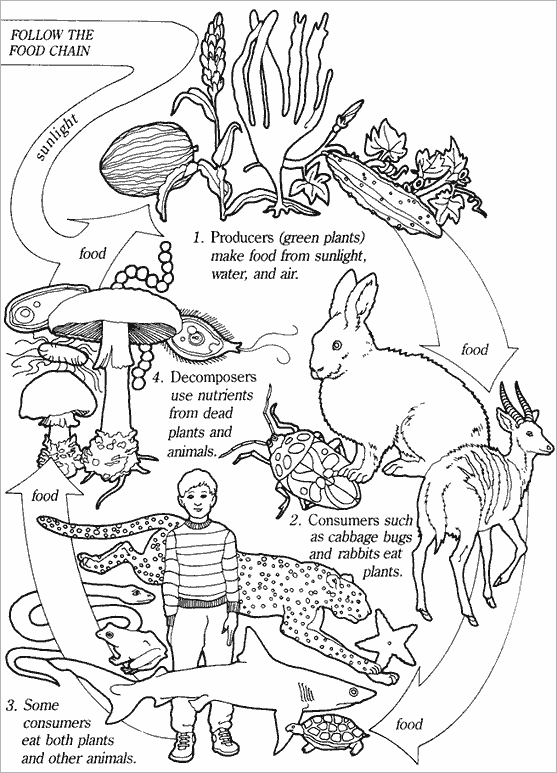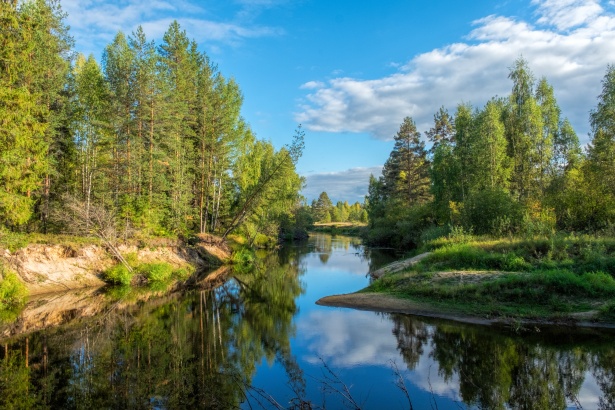
Every forest is a web of relationships among the plants and animals that live there together.
Scientists study these relationships. They sometimes think of the plants and animals in a forest as the individual parts that together make up the food chain. Members of the food chain can be divided into three groups: producers, consumers, and decomposers.
Green plants are the world's producers. With the help of the green pigment chlorophyll, they make their own food from water, air, and sunlight.
Animals are consumers. They can't make their own food, so they eat plants or other animals. Some animals eat only plants. They are called herbivores (URB-eh-vores). Some animals eat only other animals. They are called carnivores. And some animals eat both plants and animals. These animals are called omnivores. (If you want to see a really interesting omnivore, look in the mirror!)
Bacteria and fungi are decomposers. They break down dead plants and animals into simple nutrients that go back into the soil to nourish living plants. This completes the food chain.
In any forest, you can easily see a few links in the food chain.
In a northern forest, for example, you might see a shallow lake with water plants that feed gigantic moose and tiny snails. The snails are food for fish. The fish are food for water birds such as the common loon.
In an oak forest, you could see oak leaves providing food for little green caterpillars, which in turn are eaten by birds such as forest warblers.
Each link in a food chain is vital to all other links. When one link is weakened or removed by human carelessness, plants and animals from one end of the chain to the other can be harmed.
BONUS: Color the Food Chain







